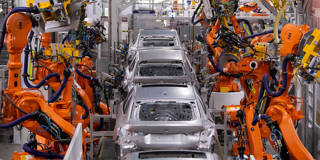Labor productivity growth in the US has been more than double that of the eurozone for the past 20 years. A forthcoming report from Mario Draghi will recommend removing barriers to competition, which would intensify the pressure on firms to innovate, but Europe desperately needs newer ideas than this if it is to see its productivity rise.
HONG KONG – The gap between productivity growth in the United States and Europe paints a stark and, for Europeans, depressing picture. In the two decades since 2004, US productivity growth, as measured by the value of output per hour worked, has been more than double that of the eurozone. Whereas eurozone productivity has flat-lined and even fallen slightly since the outbreak of the COVID-19 pandemic, US non-farm output per hour has risen by more than 6% over the same period – more than adequate performance by America’s own historical standards.

HONG KONG – The gap between productivity growth in the United States and Europe paints a stark and, for Europeans, depressing picture. In the two decades since 2004, US productivity growth, as measured by the value of output per hour worked, has been more than double that of the eurozone. Whereas eurozone productivity has flat-lined and even fallen slightly since the outbreak of the COVID-19 pandemic, US non-farm output per hour has risen by more than 6% over the same period – more than adequate performance by America’s own historical standards.